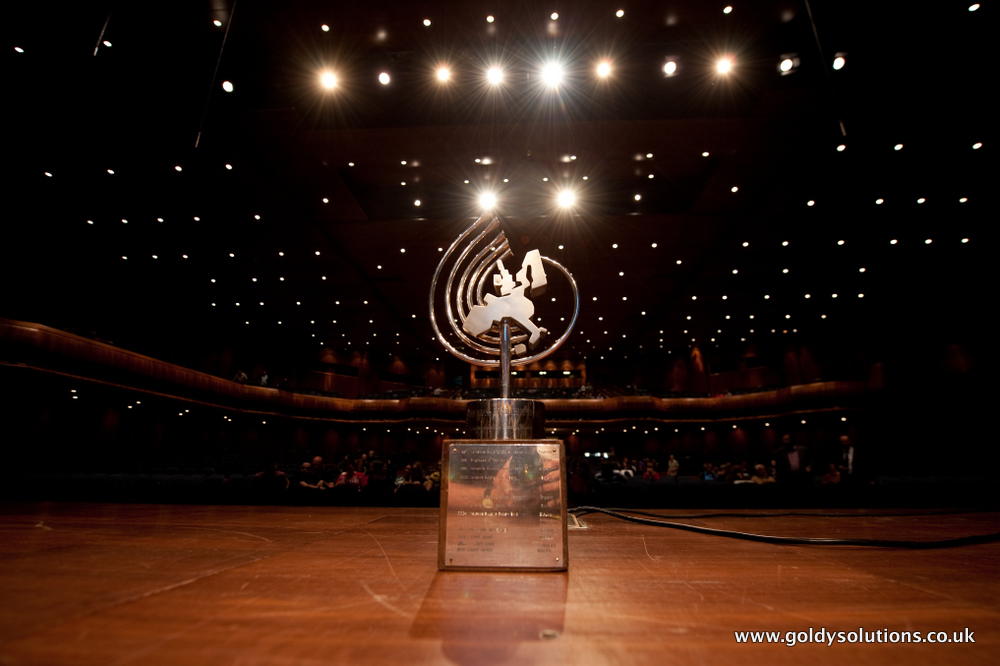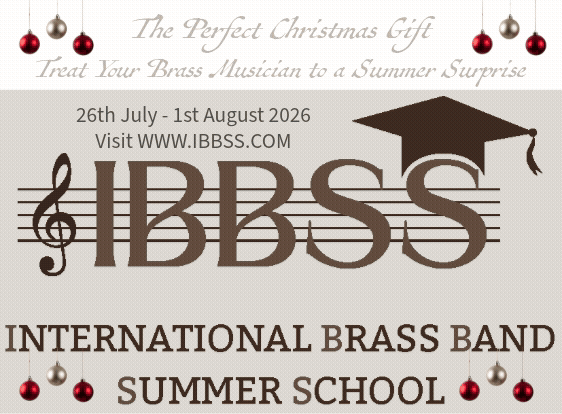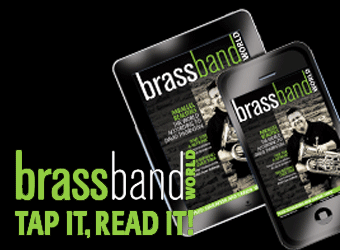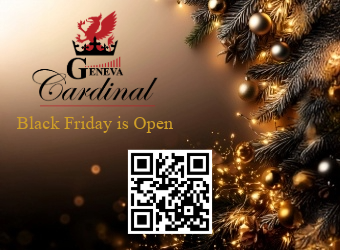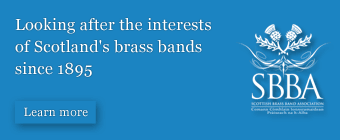A Brussels Requiem (Bert Appermont)
The terrorist attacks in Brussels in March 2016 shocked the world, whilst similar outrages in Paris, Nice and Berlin led to an increase of fear and xenophobia throughout Europe.
Following the attacks people asked questions of how cultures that spoke openly of tolerance and peace had apparently grown so far apart that they could longer understand each other.
Bert Appermont’s composition sets out to reflect on these experiences and to express the complex emotions triggered by the terrible events.
It is a very personal tribute to the victims, although it does not seek to describe what happened in Brussels in a narrative form.
The four movements are linked by the underlying children's song ‘Au Claire de la Lune’, which is first used as a cipher for the loss of innocence. It then moves through a militaristic second section reflecting on the brutal loss of life, before a minor coloured chorale leads into a paean of grief and pain.
However, the work closes in optimism; a search for meaning even child like fun as the nursery tune is recalled in the build to a fierce, passionate climax of hopefulness.
Iwan Fox
Concerto for Brass Band (Roland Szentpali)
‘Concerto for Brass Band’ was written in 2019 by the Hungarian composer and tuba virtuoso, Roland Szentpali.
It is inspired by the feelings of adventure, danger, surreal physicality and potential disaster that drive those that seek to break through different analogical versions of the sound barrier.
The four movements chart no narrative progression, but evoke notions, inklings, observations and encounters - artistic, physical and metaphorical; from the opening ‘The Sound Barrier’ and following ‘Hallucinations’ and ‘Cosmic Levitation’ to the ‘Nightmare and Chorale’ finale.
It is a work of vivid, febrile imagination that charts elements of musicality from contemporary jazz and technical virtuosity to languid beauty and evocative textures.
Iwan Fox
Concerto Grosso: Opus 61A (Derek Bourgeois)
'Concerto Grosso' was written in 1979 for the farewell concert of the famous Philip Jones Brass Ensemble; a ten-piece work for four trumpets, French horn, four trombones and tuba.
In 1982 Bourgeois was the Professional MD of the Sun Life Band in Bristol, and when they were asked to perform on the BBC radio programme ‘Bandstand’ he took the opportunity of re-scoring the work.
There is no narrative or thematic inspiration; the term ‘Concerto Grosso’ is used by the composer in the baroque sense, as throughout the piece much is made of smaller ensembles featured against a larger accompanying background.
Written in three main parts it is played as a continuous whole; exploring material that ranges from orchestral brass brilliance to sombre introspection, blues inflected jazz to rumba inspired wit.
Each of the major soloists is featured in extended quasi-cadenzas; from the euphonium and tuba to the flugel horn, whilst the initial commanding fanfares of proclamation return to close a work of vivid, febrile imagination.
Iwan Fox
Explorers on the Moon (Paul Raphael)
‘Explorers on the Moon’ was composed to commemorate the 50th Anniversary of the 1969 Moon Landings.
It is the sequel to ‘Destination Moon’, and also takes its inspiration from the cartoon detective adventures of Hergé’s literary creation, Tintin.
The music follows the narrative of the story written in 1950, which sees Tintin and his fellow adventurers become the first humans on the Moon.
‘Space’ sees the music pick up at the exact moment ‘Destination Moon’ ends; with mission control calling out over the radio, hoping to connect with the explorers on board their space craft. Slowly regaining consciousness they in turn look in awe as they hurtle towards the Moon before they attempt the perilous descent to the surface.
After losing consciousness again, Tintin eventually recovers to set foot on the Moon, describing it as, “...a nightmare land, a place of death, horrifying in its desolation.”
The music portrays this, as well as the treachery of the engineer Frank Wolff in trying to sabotage their plans for safety - the dark side of human nature portrayed in Wolff’s voice by the euphonium.
However, Tintin prevails and the explorers are able to set off on ‘The Journey Home’.
Drama ensues and with oxygen running out, but overcome with guilt, Wolff decides to sacrifice himself by leaving the rocket and floating to his death in the void of space - enabling the explorers make a triumphant return to Earth.
Iwan Fox
Extreme Make-Over (Johan de Meij)
‘Extreme Make-Over’ is inspired by a number of musical references from Russian composer Tchaikovsky; most notably the Andante Cantabile from the second movement of his String Quartet No 1 in D, Opus 11, written in 1871.
It was music that brought tears to the eyes of Tolstoy when he heard it played in 1876.
It is structured into a number of clearly defined sections, although not in variation form.
This theme is introduced by a brass quartet consisting of two cornets, horn and euphonium, before a series of metamorphoses are created from the neo classical to Indonesian gamelan.
There are fleeting references to the Fourth and Sixth Symphonies and the fantasy overture 'Romeo & Juliet' to ten ‘hoketus’ tuned bottles played by members of the cornet section.
This initial fragility builds in intensity and virtuosity to lead into the finale; a fevered canonic treatment of the theme that hurtles towards its triumphant conclusion.
Iwan Fox
From Ancient Times (Jan Van der Roost)
‘From Ancient Times’ is inspired by the music of the Flemish polyphonists.
There are no literal quotes, but the composer uses historical composition techniques to evoke the genius of the likes of Orlandus Lassus, Josquin Desprez, Adriaan Willaert, Johannes Ockeghem, Jacob Obrecht, Heinrich Isaac, Guilaume Dufay and Philippus de Monte, as well as the artistic inspirations the great painters, Rubens, Van Dijck, Breughel and Van Eyck.
The piece also goes back further in time; referencing Gregorian chant and an estampie medieval dance, whilst a modern twist is found in the cipher ostinato references based on the notes ‘EBBA’ and the first chord of the estampie-theme based on the notes of ‘VLAMO’ (the organising organisation who commissioned the work).
The music develops through further senza misura cadenzas and an ethereal homage to Adolphe Sax before moving towards a grandiose finale to be played ‘like an organ’.
All this is encapsulated within a contemporary structure that places huge demands on the ensemble and soloists alike - starting mysteriously but ending in glory - from ancient to modern in one huge arc of musicality.
Iwan Fox
Glass (Simon Dobson)
'The Glass Bead Game' is a novel written in 1943 by Swiss born author Herman Hesse.
It surrounds the lives of Joseph Knecht, the Magister Ludi (master of the game), and his monk-like colleagues who live, research and play the game as members of a utopian society in the far future.
Initially driven to write a work about Knecht, Dobson developed the idea to encompass his own thoughts of playing the game - inspired by texts on sacred geometry, sonnets by Shakespeare, Bach chorales, manifestos by Nietzsche and Goethe and works of Pythagorus and Plato.
One continuous piece split into five 'Moves' - each related in form of what subject 1 is to subject 2, as subject 3 is to subject 4' etc.
For instance: What human observation of the natural principals of structure and growth are to the observations of space and the design of buildings in architecture.
The work therefore contains themes, motifs and rhythmic/ harmonic structures that traverse throughout but are often meant to be hidden.
Move 1: The Monochord as a Model of the World.
Move 2: Variations in the formation of snowflakes.
Move 3: Architecture is like frozen music (Goethe c.1802-3)
Move 4: Kepler 22-b
Move 5: The Kalachakra Mandala
Iwan Fox
King Kong on Rue Igor Stravinsky (Paul McGhee)
As ever with Paul McGhee, not everything may be as it first seems.
This is no homage to the famous 1933 RKO film starring the frenetically screaming Fay Wray, but a work of febrile imagination inspired by the real life events that took place on December 4th, 1971, at the Montreux Casino in the middle of a performance by Frank Zappa and the Mothers of Invention.
During the synthesizer solo on the song 'King Kong', the roof of the venue ignited (reportedly by the firing of an errant flare gun) - resulting in over 2500 concert goers being rather manically evacuated.
Nobody was killed, but the entire building burned to the ground and the band lost all of their equipment - the result of which saw another rock group 'Deep Purple' go on to pen their own homage to the night with their iconic rock song, 'Smoke on the Water'.
McGhee's work explores the multitude of textures available to the modern day brass band - from muted timbres to various approaches to 'open' sonorities - requiring aggressive effects, non vibrato playing and sonorous tonality - all with interpretive expression and intent freely in the hands of the performers.
The piece juxtaposes these elements to create momentum in the music - shifting from calm to madness in the blink of an eye - much like the fateful night itself.
Iwan Fox
Music of the Spheres (Philip Sparke)
‘Music of the Spheres’ was written late 2003/early 2004 and reflects the composer's fascination with the origins of the universe and deep space.
The title comes from a theory, formulated by Pythagoras, that the cosmos is ruled by the same laws that govern the ratios of note frequencies of the musical scale - ‘Harmonia' in Ancient Greek, which means scale or tuning as Greek music was monophonic.
He also believed that these ratios corresponded to the distances of the six known planets from the sun and that the planets each produced a musical note which combined to weave a continuous heavenly melody. These six notes form the basis of the sections ‘Music of the Spheres’ and ‘Harmonia’.
It opens with a horn solo ‘t = 0’; a name given by some scientists to the moment of the Big Bang, when time and space were created. It is followed by its depiction, as the universe bursts from a single point of origin.
‘The Lonely Planet’ is a meditation on the unlikely set of circumstances which led to the creation of the Earth as a planet that can support life, as well as the search for other civilisations, whilst ‘Asteroids’ and ‘Shooting Stars’ depicts both the benign and dangerous objects flying through space.
The work ends with ‘The Unknown’ - leaving in question whether our continually expanding exploration of the universe will eventually lead to enlightenment or destruction.
Iwan Fox
Old Licks Bluesed Up (Torstein Aagaard-Nilsen)
‘Old Licks Bluesed Up’ was commissioned by Manger Musikklag in 2010 (revised in 2011) with support from the Norwegian Composer’s Fund and is dedicated to conductor Peter S. Szilvay.
The piece is constructed in three movements; 1. ‘Toccata I’; 2. ‘Ritornell’; 3. ‘Toccata II’.
The title itself gives clues of how the piece can be understood.
The words ‘old’ and the name of the movements connect the performer and listener to the past.
The descriptive idiom of the verb ‘licks’ comes from the musical styles found in blues, rock and jazz; arpeggio-figures, scales and riffs that are regularly used in improvisations.
‘Toccata’ is a well known musical genre from baroque keyboard music, a free flowing piece filled with energy, whilst the ‘ritornell’ (‘little return’ in Italian) can be described as a refrain; a reoccurring theme evoking the form of a returning musical passage derived from madrigals also of the baroque.
As the composer states: “I have used licks inspired by both old masters and not so old masters, but no quotations!
They´re all mine. Enjoy!”
Iwan Fox
The 39th Parallel (Peter Graham)
Peter Graham's 'The 39th Parallel', was commissioned by the Brass Band Association of New Zealand, in memory of the late Kevin Jarrett, with funds from a variety of sources. It was first performed in competition by the National Band of New Zealand at the World Music Contest in Kerkrade in 2017.
It is inspired by the 39th Parallel (South) in which lies the New Zealand district of Whanganui and at its heart, the Whanganui river - Te Awa Tupua.
The work is cast in two parts - the first an evocation of the course of the river from Mount Tongariro to the sea.
This is constructed according to the mathematical principals of the ‘golden ratio’, which runs in parallel with a sequence of metrical modulations that gradually increase the tempo of the music, mirroring the course of the flow of the river.
It is followed by the elegiac Apakura (meaning ‘lament’ in the Maori language) which develops the theme hinted at in the opening section but which is now fully realised.
It is a homage to the late Kevin Jarrett - a towering figure in New Zealand brass banding, who for many years lived and worked in Whanganui.
It includes references to music which formed a significant part of his life; as part of the New Zealand Army Band musician (echoes of the Urbach march ‘Through Bolts and Bars’) and his long association with the National Band of New Zealand (hints of Goffin's ‘Rhapsody in Brass’) before ending with optimism and triumph with a reprise of the major thematic material.
Iwan Fox
Vita Aerterna Variations (Alexander Comitas)
Although in construct a work of six variations and fugue based on a simple theme, ‘Vita Aeterna’ has the essential spirit of a tone poem.
It is an unfolding tale of life, death, hope, despair and redemption; hence the nods of appreciation towards composers and writers whom Ed de Boer (written under his pseudonym) felt understood his deeply-held beliefs on such matters.
At its core is an emotively affecting attempt to reconcile the feelings of immediate physical loss with those of eternal spiritual hopefulness through an intellectual appreciation of the Hindu and Buddhist teachings of Karma.
And even though thoughts of mortality and its possible dominions tends to be the preserve of those late in their life span, ‘Vita Aeterna Variations’ commemorates the life and death of a young Dutch euphonium player called Jeffrey Lindelauf.
From tentative beginnings, through episodes of energy and vitality, fate, despair and redemption, to an apotheosis of an acceptance of the possibility of eternal life, it is a work of spiritual as well as academic rigour and insight - questioning our beliefs in accepted norms.
Iwan Fox



